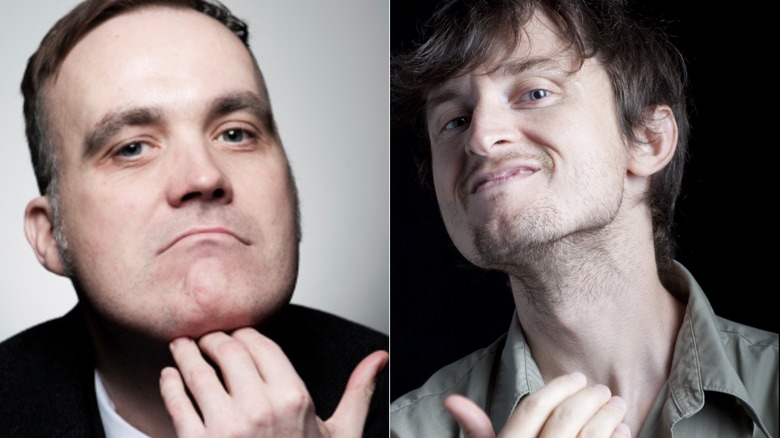Rick Steves Shares What It Really Means When You 'Chin Flick' In Italy And France
From guided group tours to travel books to his eponymous TV series, Rick Steves has been helping people enjoy the wonders of Europe for almost 50 years. Steves' top tier European travel tips have included exploring lesser-visited cities, packing light, sharing the unexpected secret to enjoy Europe's best sites, boldly encouraging travelers to push themselves out of their comfort zones, and understanding the gestures of the continent. European gestures come with their own varied meanings, and the "chin flick" is one of the most common. But what does it really mean?
In a blog post, Steves explained that in Italy and France, where the chin flick is often used, the gesture means "I'm not interested, you bore me," or "You bother me." It can also be a simple "no" in southern Italy. While hand gestures are important in French culture, in Italy they are akin to fine art. Figuring out how to use hand gestures properly could either endear you to the locals ... or get you in a lot of trouble.
Still, understanding the chin flick as a nonverbal code is essential, especially if it is being used against you. Remember, the gesture is not necessarily an insult. It's just a way of communicating that you might not be used to. Take things with a grain of salt. However, if you find yourself in a situation that warrants the chin flick, you need to know how to do it properly.
How to do a European 'chin flick' properly
Being able to perform hand gestures properly could keep you from getting into a lot of trouble in Western Europe. As an example, the "V for Victory" sign in the U.K. is meant to be done with your palm facing outwards. If you flash a "V" with your palm facing towards you and the back of your hand towards another person, that is the British version of the middle finger. While the chin flick is not misinterpreted as an insult if not performed correctly, Steves still advises that you learn to do it properly. He writes: "Tilt your head back slightly and flick the back of your fingers forward in an arc from under your chin." If this seems similar to Marlon Brando flicking at his lower mandible in the opening scene of "The Godfather," now you know what he was trying communicating to Bonasera!
While it is not generally considered to be a rude gesture, you should use it sparingly. In a situation where you are being aggravated by someone, using the chin flick as a symbol that the conversation is over is completely justifiable. In normal conversation, however, there isn't a need for it. If you're having a pleasant chat and all of a sudden pull out the "you're boring me" flick when you don't necessarily mean to, that could be taken as an insult.
Other useful gestures to know
There are several popular European gestures you should know before heading out on your trip. Remember Italy? Where the hand gestures are a language all their own? The iconic "hand purse" — the fingers and thumb coming together — is a question in Italy. As Steves explains it could mean "What's new?" or "What do you want?" In France, however, the hand purse indicates fear, while in Greece and Turkey, it's a symbol for "good."
Another good one to watch out for is the eyelid pull, which is when someone subtly tugs the skin under their eyelid. In France, this sign to tells people that you're alert and won't be fooled. In Italy and Spain, however, it's a code that warns you that someone could be trying to cheat you. If you're chatting with someone and another person passes you and tugs on their bottom eyelid, they're trying to tell you the person you're chatting with cannot be trusted.
Then there is the fingertip kiss. This is the universal sign for praise across most of Europe. It can mean any number of different compliments, but Steves suggests you try to be nonchalant, saying "tourists look silly when they overemphasize this subtle action." So, while it's important to know these gestures, observe them more than you use them. The better you can understand through observation, the better you'll be able to use these gestures when the time is right.


